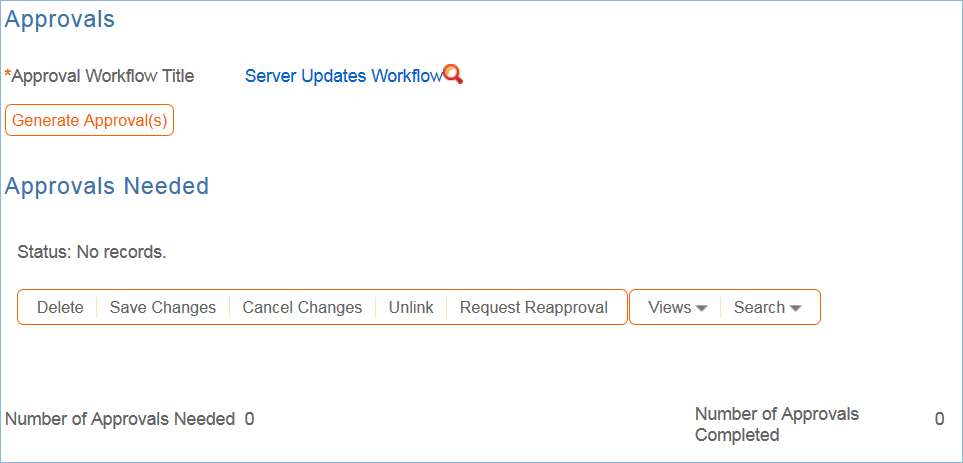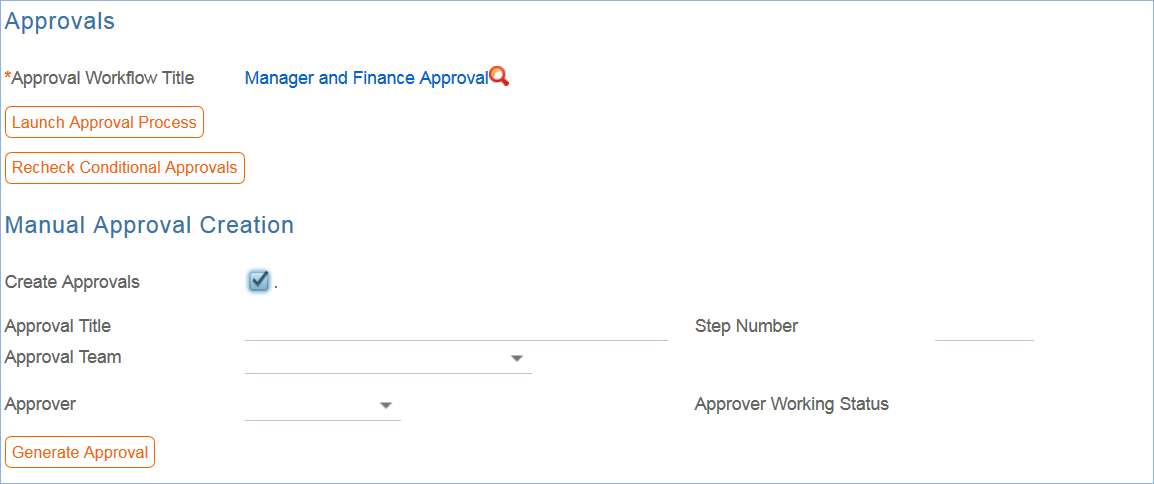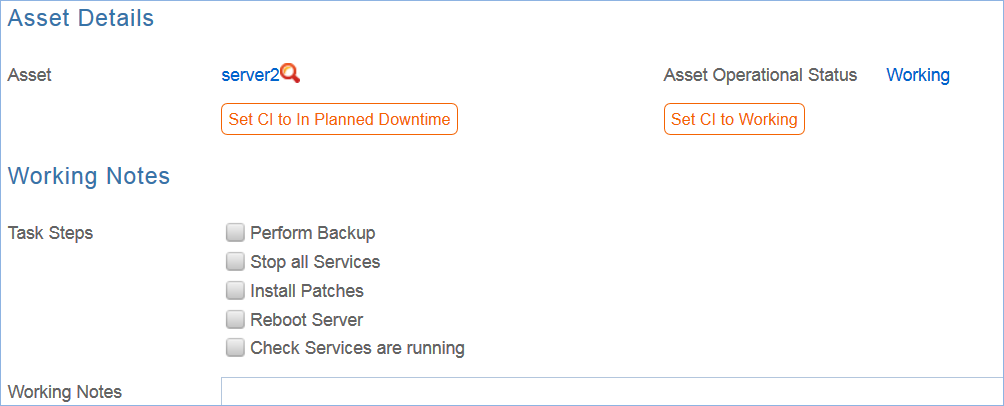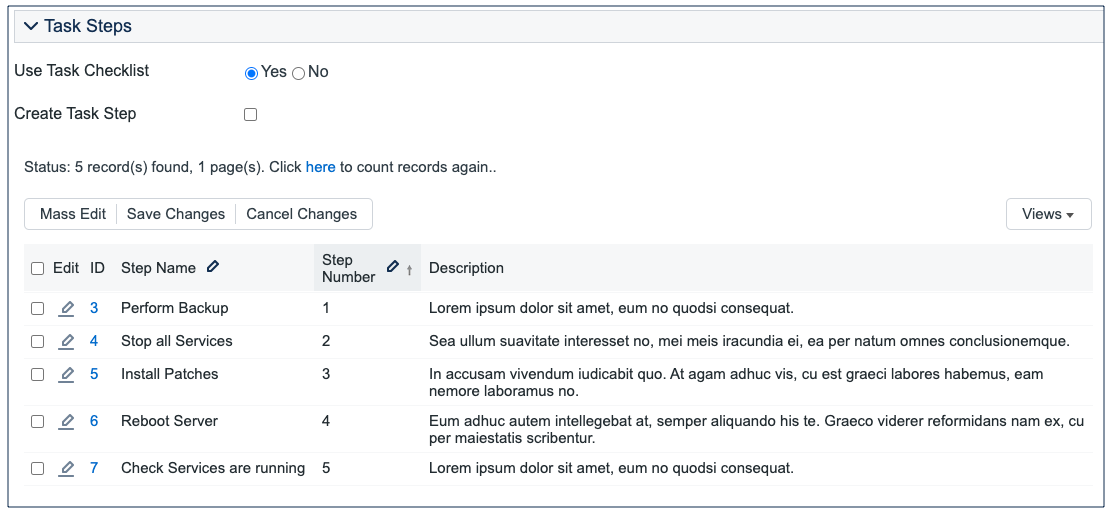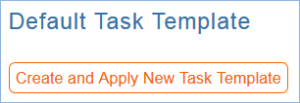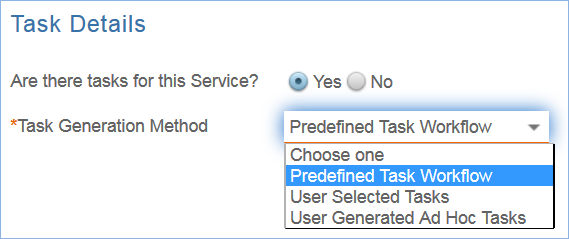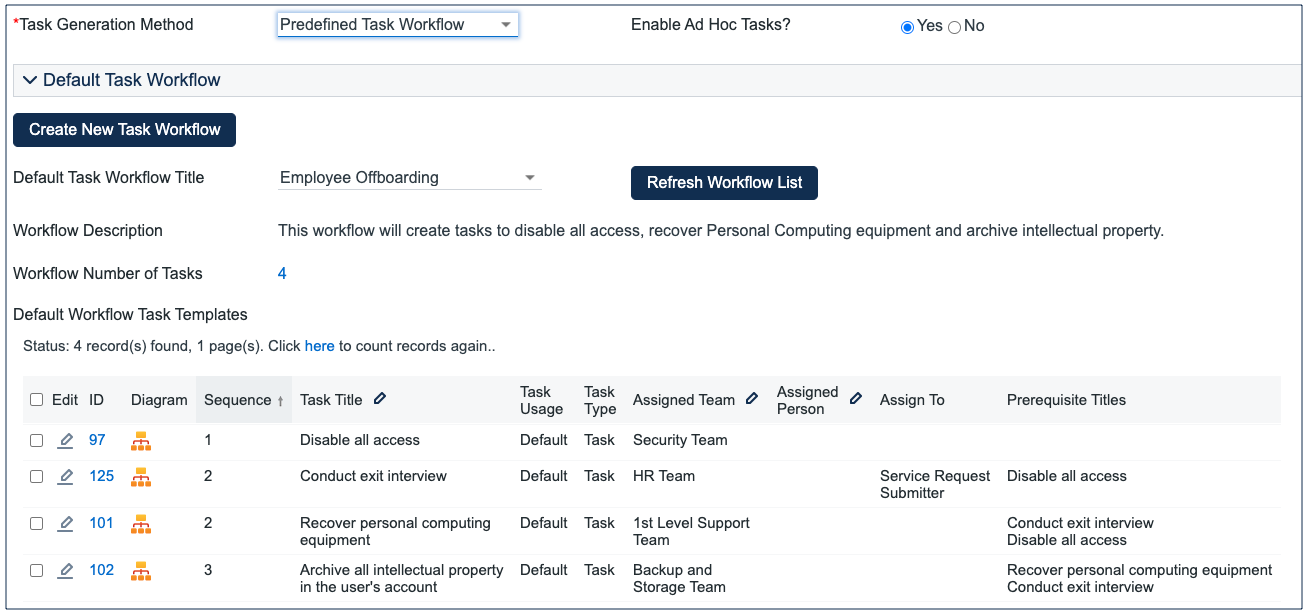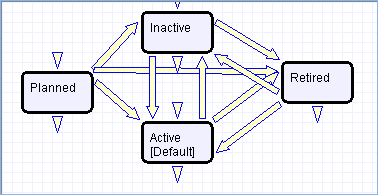...
Some services may have associated approval workflows or standard tasks or task workflows. These options are available from the additional tabs in the Service record:
In the current version of the ITIL template, approvals are available out of the box only for Change Requests. Tasks are available for both Service Requests and Change Requests.
...
There are three options for how to handle approvals for a change request, shown in the Approval Generation Method drop-down below: using a predefined approval workflow, manually created ad hoc approvals, or both:
For a Predefined Workflow Only, users will select from existing approval workflows related to change requests. If none yet exist, they can use the button to create a new approval workflow on the fly.
...
In a Change Request based on a predefined workflow only, the user will see the workflow listed and a button to generate the approval records. If the user has permission to edit the Approval Workflow Title field, then it will also be able to select a different workflow as needed:
If both predefined and manual approval creation are permitted, the user will see an additional checkbox, Create Approvals, that can be expanded to add one or more ad hoc approvals:.
If only the manual approval creation is defined, then the user will just see the option to Create Approvals and will add any approvals needed.
...
The Tasks tab of the service allows the selection of a method for task generation. The available methods depend on the request type and they are different for service requests and change requests. Change Requests have two options for the task generation method: Predefined Task Workflow and CR Single Task from Template:.
Change requests are typically associated with one or more assets. Task handling for change requests is therefore designed to create a task for each asset that has been associated with the request. If the user chooses 100 assets for a change request and generates tasks, whichever tasks are defined for the change request are created 100 times, one for each asset. The tasks are generated in this way by using a task template and pushing its details down through the asset records, so this necessitates restricting some of the other task generation options.
Predefined Task Workflow allows the selection and/or creation of a Task Workflow with predefined task templates arranged in a sequential or parallel order (see more details about configuring task workflows in the Task Workflows section).
Note that if your workflow has 3 tasks, they will each be generated for each asset.
The CR Single Task from Template option is more common for change requests involving numerous assets. Here you define a single task template to be used with the change request:.
Note that a single task may have several predefined steps, presented as a checklist, to assist technicians in performing the task. See the sections on Task Templates and Task Steps below for more details on how to set this up. Below is an example of a task template that has been defined with specific steps:
Here is how the setup above will appear in the task that is assigned and updated by the user doing the work:
Using task steps within a single task makes sense for a change request.
While setting up the service, if the task template you want to use does not yet exist, the Create and Apply New Task Template button can be used to bring up the task template screen to define a new template, and once saved, that template will be selected for the service you launched it from.
In the actual change request, it is possible when using this task method to select more than this one task template to generate. Once having generated the default task, the user may select from other pre-defined tasks and generate them as well.
...
For service requests, there are some different task generation options. There are three possible methods:
Predefined Task Workflow has the same usage as it does in change requests, except that the tasks are not tied to assets and are just created once per request.
With this choice in a service request's service, another field - Enable Ad Hoc Tasks – appears, and if it has a Yes value, then in addition to the predefined tasks, the user may create additional tasks for a particular request.
User Selected Tasks allows the service manager to create a set of possible tasks that will be displayed in a service request as checkbox items, so the user may select which tasks are relevant for this particular service request and generate just those tasks:
The Create Task Template button is used to create the potential tasks as templates. Ad hoc tasks may also be enabled for this type by selecting Yes for the Enable Ad Hoc Tasks? field shown above.
The result of the service shown above in a given service request:
The user checks the boxes for the desired tasks, then clicks Generate Task(s) to create the individual task records. These tasks, since they are all optional, are defined as parallel tasks without specific prerequisites.
User Generated Ad Hoc Tasks – this selection allows the user to create manual tasks in the service request without reference to any preexisting templates. In this case, the user will see a button in the service request to create a new task:
When creating an ad hoc task, you can make it sequential by selecting one or more prerequisite tasks.
...
Service records may be created in a state of Planned or Active. Once all active services have been set up during the initial system configuration, it may be desirable to edit the workflow to deselect the Creatable box for the Active State, so that future services must start in a status of Planned and go through an approval process. Temporarily inactive services should be placed in the Inactive state. Services no longer in use can be placed in the Retired state for record keeping.
Workflow
Saved Searches
...




